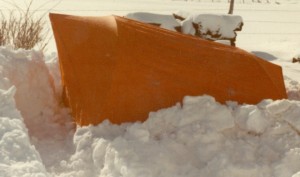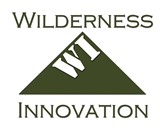This is in part an unofficial introduction to our new gear and training system, with the full launch coming soon, I could not help but do this blog post in that same fashion.
There are a wide variety of sleeping systems available commercially and even more devised by countless outdoors people. I call them systems because in reality a sleeping bag alone is not generally sufficient for winter conditions, so there are a few components involved.
Our levels are as follows: Core, Efficiency, and Comfort.
Core is what it takes to survive a day to several days, Efficiency gets you to a week or so, and involves doing things that save body energy, are quicker to set up and are very effective for sudden situation changes, the Comfort Level means generally that you are better prepared and bring more with you, as well as having significantly better skills to set up for a good degree of comfort for longer term or more severe conditions.
Core Level sleeping systems are mostly very basic and consist of whatever can be pulled together to survive one to several nights in the snow. This can include clothing, coats, and blankets to function as a makeshift sleeping bag. Grass, leaves, twigs, boughs, foam or carpeting from car, etc. for under padding and insulation. Tubes, tarps, snow blocks, snow wells around trees, debris, and anything else that can be used to protect from wind and snowfall and also to add additional heat containment.
Efficiency Level may utilize some components of the Core combined with others to make the system more complete and effective. A light sleeping bag, good thick blanket, or well insulated pants, jacket, and vest, to sleep in. A well insulated, foam or inflatable foam pad, keeps your body heat from conducting to the snow. A tarp like our PST, snow trench shelter, snow blocks to shield from wind, or light tent to help provide a more shielded environment.
The Comfort Level would include cold weather sleeping bag, good quality sleeping pad, expedition or four season tent, igloo or snow cave type structure.
In looking at the 3 Levels you should not confine yourselves to the gear mentioned, but also think about the skill and knowledge level you have. Much of your success in winter camping and sleeping will depend on what you know and what you are able to put together based on your experience. Conditions always vary. You could go out in mild winter weather and wind up caught in a blizzard, how you adapt to that with a combination of skills and equipment will determine if you sleep at a Core Level or a Comfort Level. I have seen people with high dollar Comfort Level gear, sleep very uncomfortably due to lack of knowledge and experience.
Using these Levels you will be able categorize the equipment you own, the knowledge and skills you have, combined with your ability to integrate natural materials. You will soon be able adapt from a situation that is sheer survival to one that is cozy and comfortable. The difference in these Levels is not necessarily dictated by how many dollars a person spends on gear.
Knowing what the levels involve will help you to learn effectively and become much more proficient. You can see where you stand and what is needed to take yourself to the next Level.
When all is in place all Wilderness Innovation website pages, gear, training materials, books, Rendezvous, and other training events will feature the Levels system and provide a progressive learning system, a checklist of gear needed, and a way to use real world situations to pass off or certify abilities at each level. You will know where you are and exactly where you need to go to advance.
We have a Winter Rendezvous scheduled for February 4th and 5th that will be a snowshoe in event. You can bring whatever gear you feel you need. If you don’t have snowshoes, we have quite a few pair you can reserve. While at the Rendezvous we will cover some core level sleeping systems, the Wilderness Mattress, the F.O.A.M. concept, as well as options for cooking and eating in winter. We will introduce some concepts that allow ultimate snowshoe camping freedom, such as winter camping and water making without stove or fire, and camping without shelter. Much of what we do will be hands on experience.
If you want to improve your winter camping experience stick with us as we roll out the Levels training system.
Until next time this is Perry Peacock, “Simplifying Survival”




Hi Perry and Beau,
We had a winter camp last week. Three nights. The foam works so great. I hope your camp doesn’t have to deal with mud. Ours actually wasn’t too bad until we came out of the canyon where the mud was thawing. I tried out a bivy sack on the sleeping system for the first time. I cheated though because I was with friends with a heater in their tent. The true colors are at 5:00 in the morning. Being warm
even when you get up at 16 degrees is sooo fine. Are there any lady’s going on your hike?
Lauri